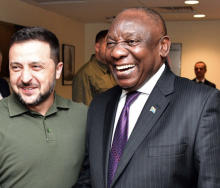Severe understaffing of state veterinary services has contributed to the local industry missing export targets, set under the Poultry Sector Master Plan.
The master plan, a joint effort between government and industry, was established to protect the local industry against predatory trade and dumping after several years of chickens being imported for less than local production costs.
FairPlay South Africa, an industry lobby group, points out that in 2019, when the master plan was signed, chicken exports totaled 50 229 tons.
By the end of 2023, this was down to 46 789 tons.
The master plan foresaw a rapid increase in chicken exports, more than doubling to between 3% and 5% of production by 2023, and doubling again to between 7% and 10% of production by 2028 “with a growing proportion thereafter”.
FairPlay notes that “this has not happened, mainly because there is still a chronic shortage of state veterinarians”.
In addition, the masterplan noted that although South African chicken exports would enjoy duty-free access to the European Union (EU), there had been no exports to the EU “largely because we have not developed the necessary systems to meet the sanitary and phytosanitary (SPS) requirements of the European market”.
“South Africa must expand its state veterinary staff and facilities to provide the health certificates needed to enter the EU and other export markets. This has not yet happened, although negotiations with the EU are underway,” says FairPlay.
“The department of agriculture needs to up its game if the exports drive is to gain momentum,” admitted Thoko Didiza, Minister of Agriculture, Land Reform and Rural Development, in an answer to a parliamentary question in November last year that her department had budgeted for 326 state-veterinarian positions, but 32% of them were vacant.
In addition, a report by an industry task team commissioned by Didiza in 2021, completed in 2022 and released last year, found that a failure to proclaim a new Animal Health Act led to insufficient preventative measures and uncoordinated responses to disease outbreaks.













